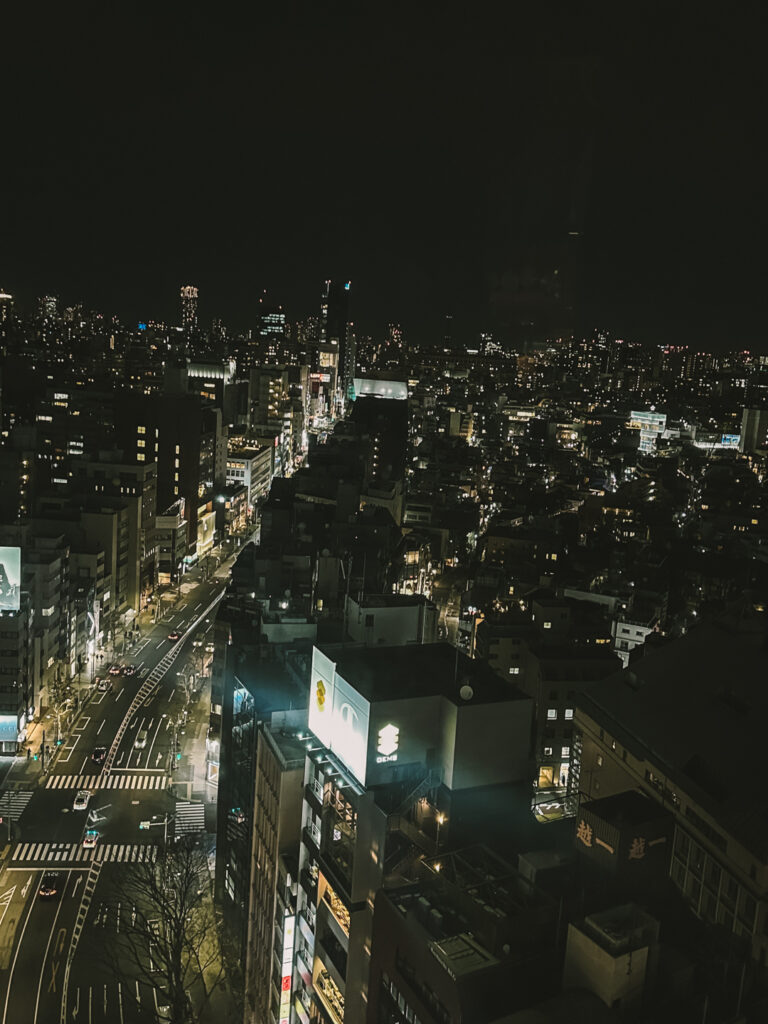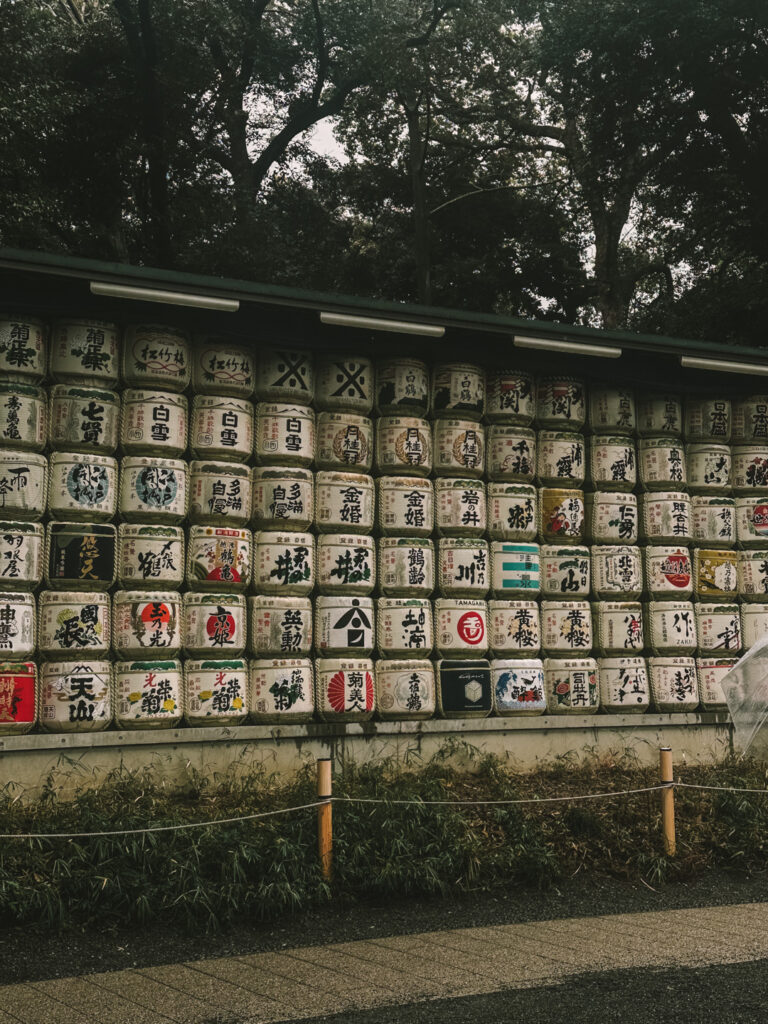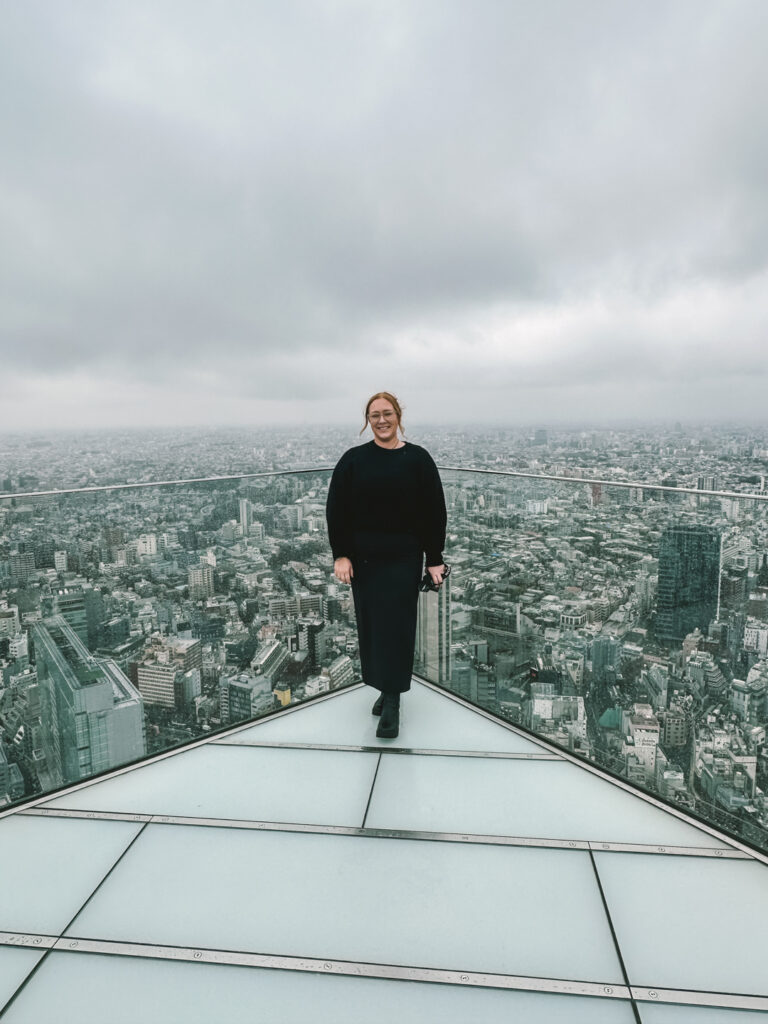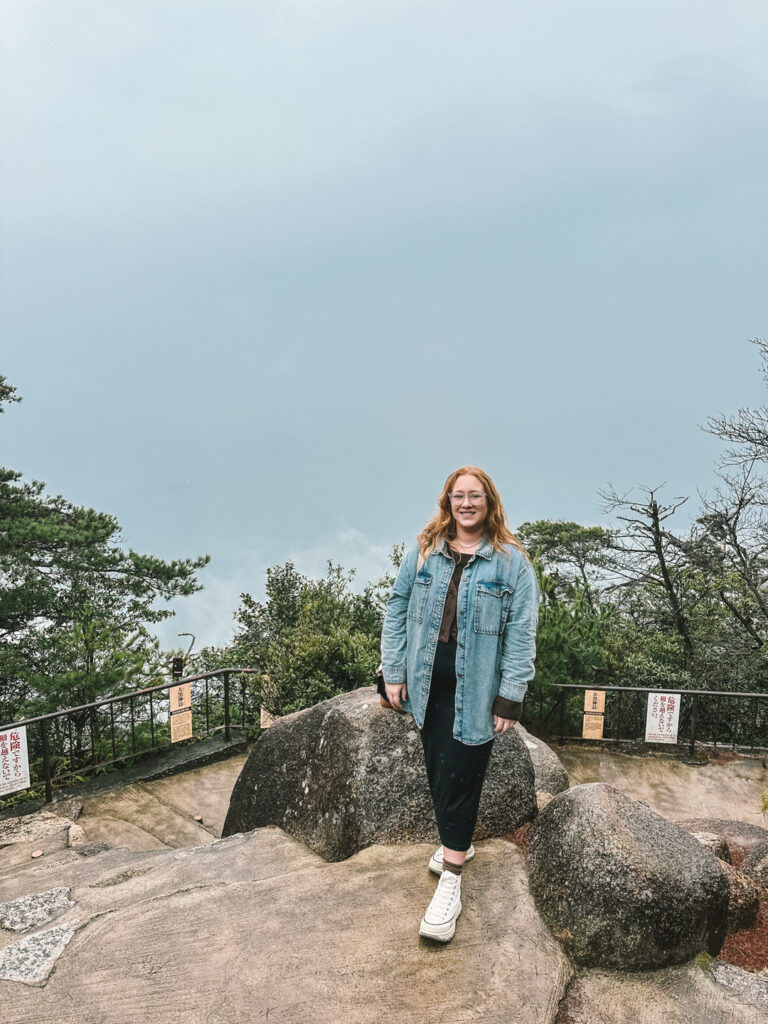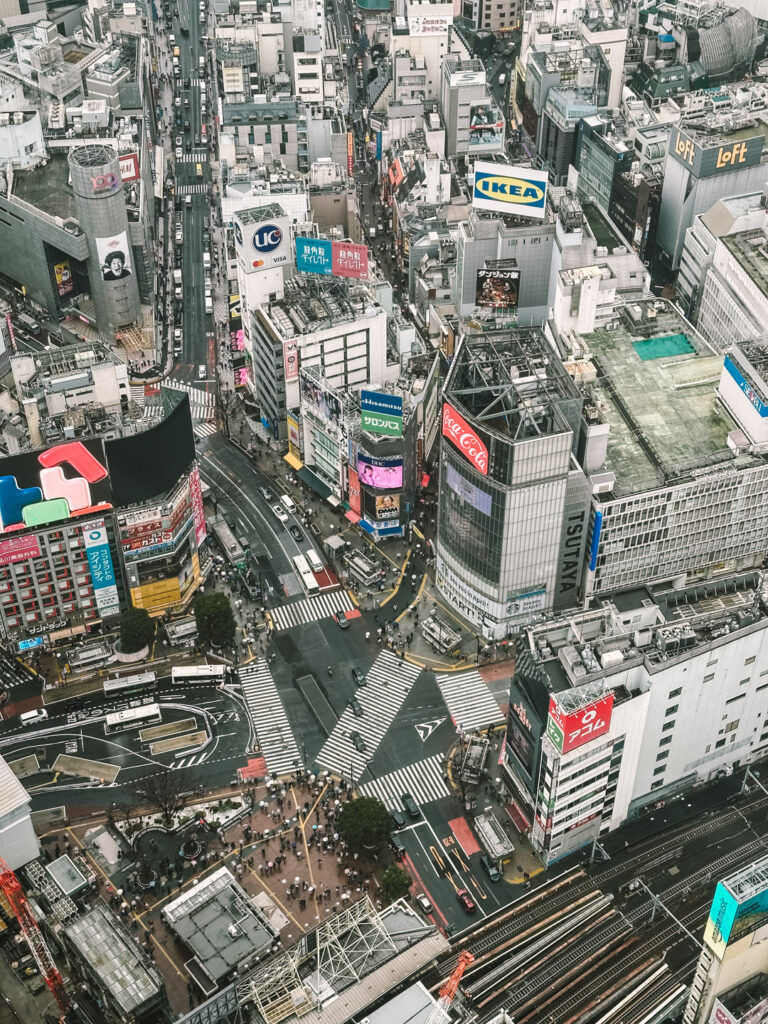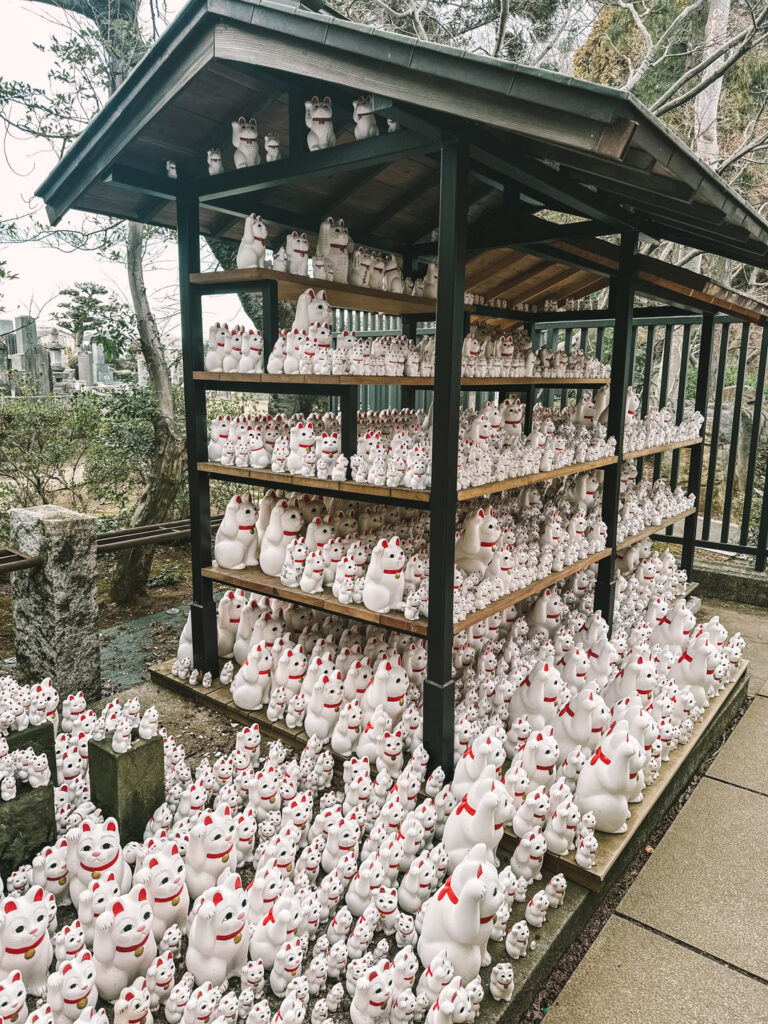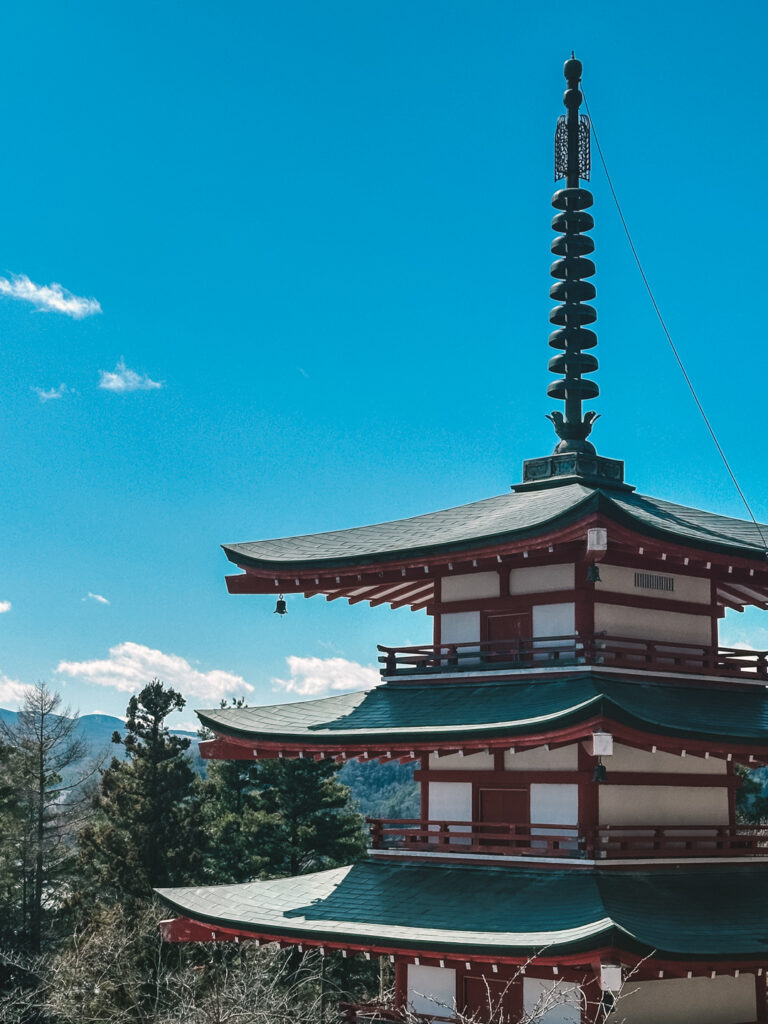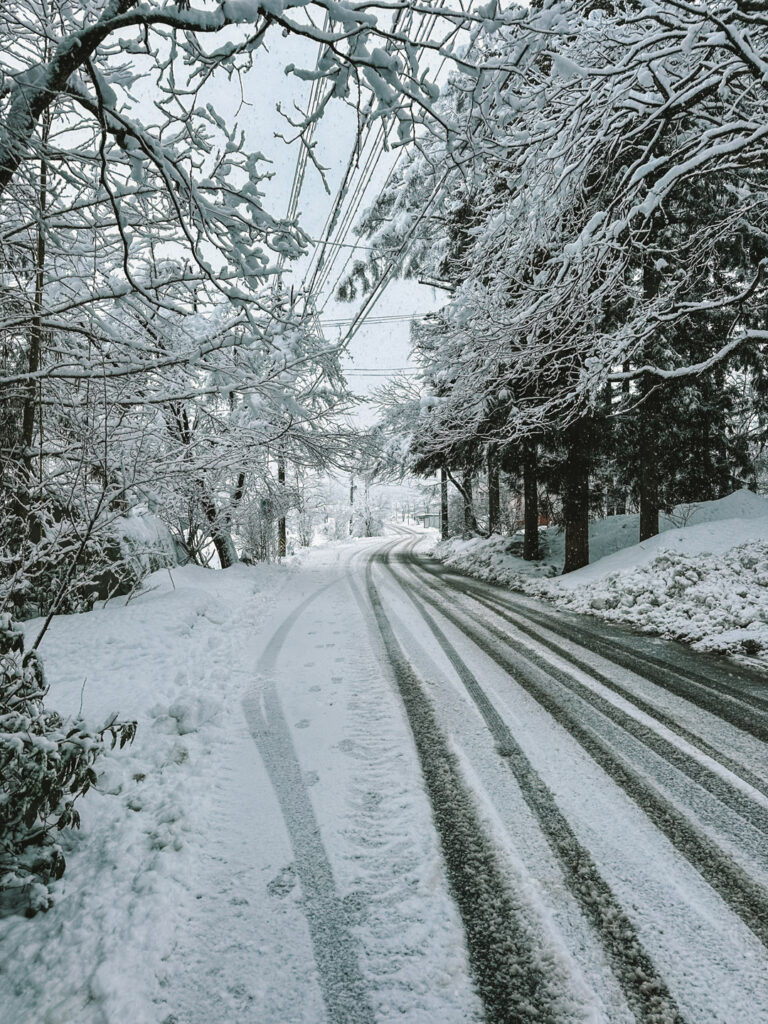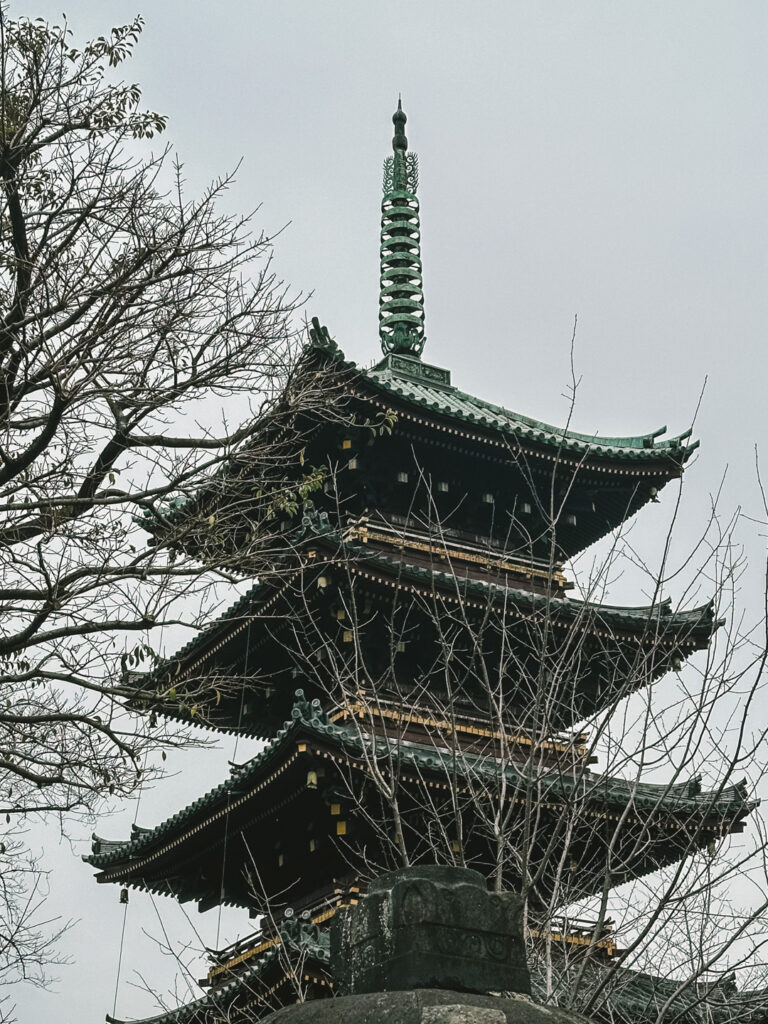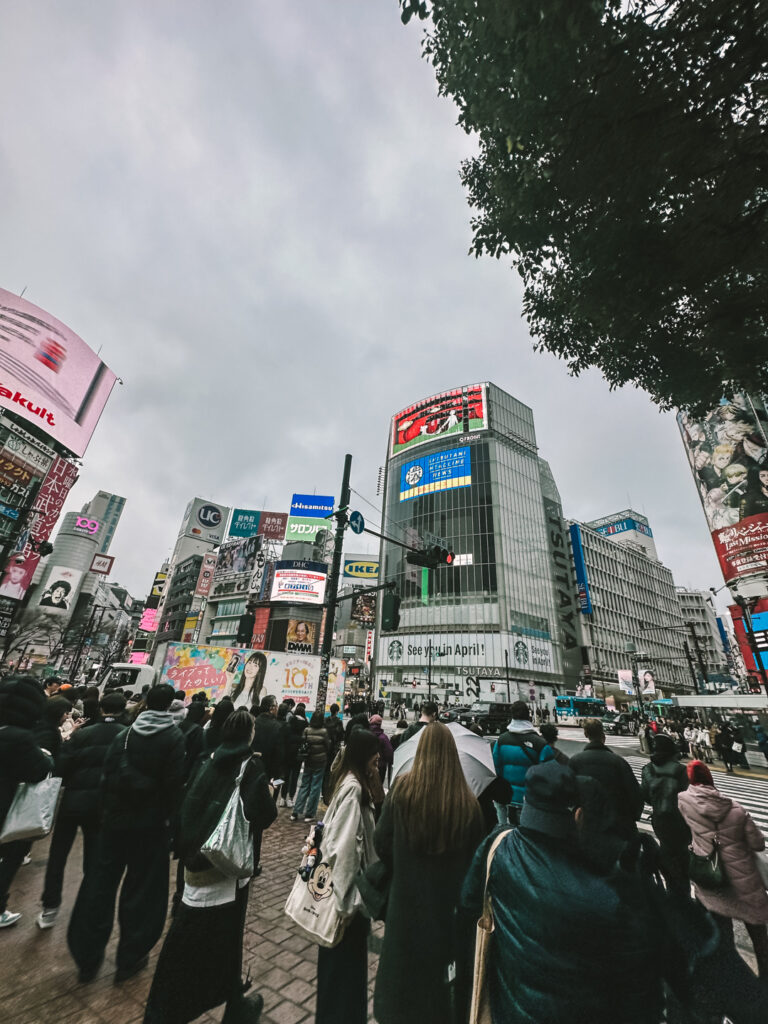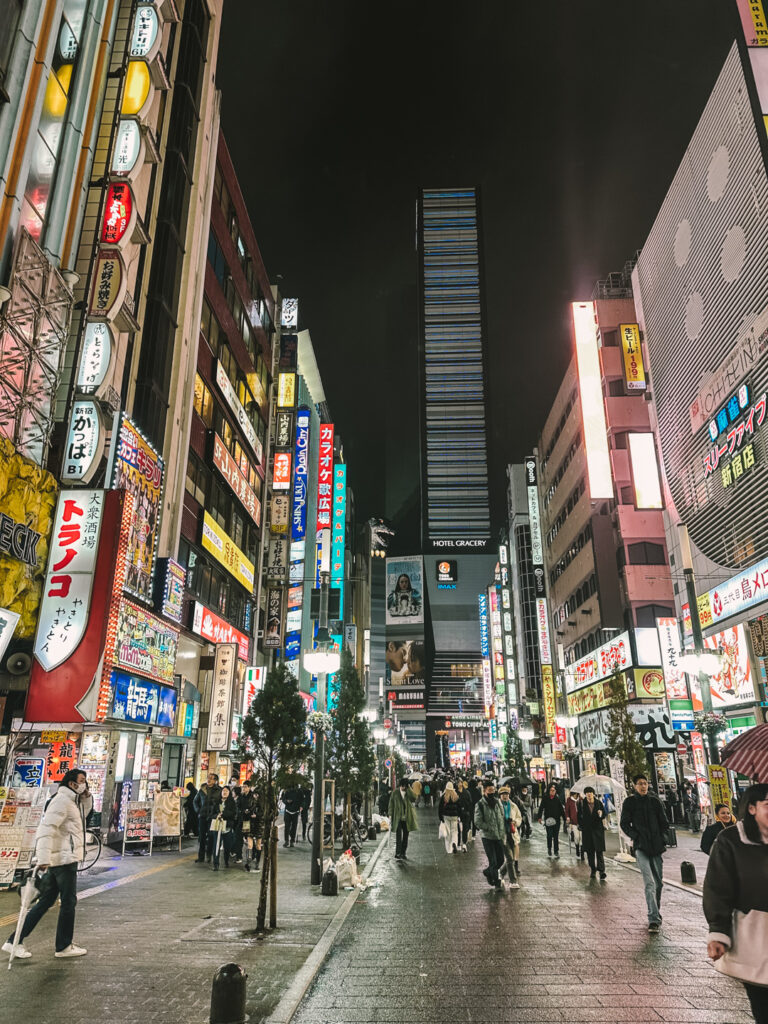Day 1 & 2: Tokyo
If you want to get a taste of everything Tokyo has to offer, from Shinjuku, its gardens, through to Harajuku and then to the bustling streets of Shibuya and stop at a range of vendors to taste your way around Tokyo.
Start your day in the streets of Shinjuku, where you can either find a bite to eat from a local restaurant, or pop into a convenience store and load up on some snacks for the day – just remember that the locals don’t walk and eat, so be respectful and keep all of your rubbish with you. If you managed to make it through Shinjuku train station and come out at the correct spot, you may have conquered one of the toughest challenges I have ever faced.
As you begin your walk, you will easily stumble into Yoyogi Park to explore Meiji Shrine. Within these gardens, you will also find the wall of Sake wrapped in straw. There are plenty of photo opportunities here, along with the chance to write your well wishes at the Shrine. Coming out of the other side of the gardens, take the short stroll to Harajuku and Takeshita Street, where there are more than enough food vendors for everyone’s palette to enjoy.
By mid-afternoon, make your way to Shibuya and visit the famous Shibuya crossing. From here, you can either experience Shibuya Sky or explore Shibuya station and the shopping district that surrounds the area. Don’t forget to visit the statue of Hachiko – the famous loyal dog. Spend the afternoon exploring Shibuya, and come back to the famous Shibuya Crossing in the evening to really experience everything the nightlife has to offer. Find yourself in one, or more, rooftop bars around Shibuya and explore Tokyo’s nightlife.
Your next day is all about the Gotokuji Cat Temple, where you will find countless cat figures lining the walkways of the Temple. Enjoy the adventure from your accommodation to this gorgeous small town in Tokyo and take in the beautiful sights along the way. If cats are what you’re interested in, stop into a cat cafe on your way back into Shinjuku and get cosy with some adorable feline friends. That night, take a stroll through the streets of Shinjuku where you can find Godzilla lane and the lifesize statue along with the famous curved billboard that makes it look like the cat is coming out of the screen. This is the perfect opportunity to wander down an alley or two and find some of the most delicious food.
Day 3 & 4: Kanazawa
Start the day early by catching the Hokuriku Shinkansen to Kanazawa (approximately 2.5 hours). While you’re waiting at the train station, make sure to pop into the multitude of bakeries and convenience stores to get yourself a bento box for the journey or even just a range of bakery snacks – you can’t go wrong with any of their bread rolls!
When you arrive in Kanazawa, you have to visit Kanazawa Castle and the Kenrokuen Garden. If you can, find a tour of the castle to dive into the full history of the castle, including its legendary samurai history. Being a free area to explore, this is a must for any trip to Kanazawa. As you wander away from the castle, make sure to find yourself amongst the Oyama-jinja Shrine and gardens. In the evening, take a stroll around the town and enjoy a kaiseki dinner.
Day two is best spent on your feet, walking the streets of Kanazawa and exploring every alleyway and tiny street within the Higashi Chaya District. This area is known for its traditional teahouses, so it’s only natural to do a traditional tea ceremony. It’s here that you can also create your own piece of jewellery to commemorate your time in Japan. Find everything from traditional foods, such as Takoyaki, to current season Sake tastings (always try the plum wine), and don’t forget the handmade trinkets to take home for yourself or loved ones. If you haven’t filled yourself up on the numerous treats found within the Higashi Chaya District, wonder a little bit further and pop into any one of the local restaurants for a truly spectacular dining experience.
Day 5 & 6: Kyoto
Whether you are an early or late riser, catch a morning train through the Japanese Alps to Kyoto, once the imperial capital of Japan, and with over 2000 shrines, temples & gardens, Kyoto is the perfect place to get lost in. If you can handle crowds of people, find yourself immersed amongst the Nishiki Market and what feels like a never ending array of food, shops and people. At the end of the street, you’ll find the Nishiki Tenmangu Shrine. It is here you will find stone cows said to represent the divine messengers of the deity, rubbed gold by passersby. Pet this nade-ushi cow in the hopes of improving your luck, or according to your wishes, such as petting its belly for a safe pregnancy, its head for headache prevention, or in my case a left leg for a speedy recovery of what I was neglecting to admit was a broken leg.
Part of the fun of making your way to Kiyomizudera Temple, is the atmospheric lanes of the Higashiyama District you walk through to get there. Kiyomizudera – “Pure Water Temple” is one of the most celebrated temples in Japan. Behind its main hall stands Jishu Shrine, a shrine dedicated to the deity of love and matchmaking. In front of the shrine are two stones, placed 18 metres apart. Successfully finding your way from one to the other with your eyes closed is said to bring luck to finding love.
The Otowa Waterfall is located at the base of Kiyomizudera’s main hall, with its waters divided into three separate streams, where visitors use cups attached to long poles to drink from them. Each stream’s water is said to have a different benefit – to cause longevity, success at school and a fortune in love – however drinking from more than one is considered greedy.
After taking in everything the Higashiyama district has to offer, spend the evening wandering the neighbouring Gion District, known for its geisha culture. There’s no bad decisions when it comes to where to go for dinner, follow your nose and find that delicious smell you’re suddenly craving.
An early morning start is recommended for this full day of adventures. Start your day by heading to the wooded hills of Inari Mountain, famous for its Shinto ‘fox temple’ and atmospheric red tori gates. This is a must-see for keen photographers! Shinto Shrine is famous for its thousands of vermilion tori gates, which straddle a network of trails leading into the wooded forest of the sacred Mount Inari, which stands at 233 metres and belongs to the shrine grounds.
After about a 30-45 minute ascent and a gradual decrease in the density of torii gates, you will reach the Yotsutsuji Intersection roughly halfway up the mountain. It is here most people will stop and take in the breathtaking views of Kyoto in the distance. Along the way, you may have noticed a few restaurants, which offer locally themed dishes and are the perfect stopover on the way back down.
The next stop of the day is Tenryuji Temple, the most important temple in Kyoto’s Arashiyama district, and is now a registered world heritage site. The beautiful landscape garden features a central pond surrounded by rocks, pine trees and the forested Arashiyama mountains. Walk through the gardens and take in all the temple has to offer, before ending at the start of the Arashiyama Bamboo Grove. There is no comparable feeling to what rushes over you as you stand amongst the sprawling bamboo, towering above you in a way that looks infinite.
Kyoto is the place to show off your vocal range and sing your favourite songs with your besties, so make sure to book a room and visit a local karaoke bar! You definitely won’t be ready for the night to be over, so if your hostel has a rooftop, grab a few drinks on the walk home and enjoy the gorgeous night sky and breath of fresh air that is Kyoto.
Day 7 & 8: Hiroshima
Hiroshima is a bustling metropolis with a tragic history, and yet is one of the most peaceful places you will visit on this trip. Another Shinkansen will get you to Hiroshima in approximately 2 hours from Kyoto, and the first thing on your list should be the Peace Park and the ruins of the A-Bomb Dome building – one of 11 structures left partially standing as a reminder of the destruction of nuclear war following the atomic bomb blast on August 6th 1945.
Allow yourself to become fully immersed within the park, and allow yourself to wonder peacefully, taking it all in. Between the A-Bomb Dome and the Museum is the Cenotaph for the A-Bomb victims. The Cenotaph is an arched tomb for those who died of the bomb, below the arch is a stone chest holding a register of these names, of which there are over 220,000. You will be brought to tears, however you must experience the Hiroshima Peace Memorial Museum and get more in-depth knowledge about the stories and lives of those affected by the Atomic Bomb. After a day of exploring, find yourself over-indulging a Hiroshima-style okonomiyaki for dinner – savoury pancake of cabbage, meat or seafood, grilled in front of you on a sizzling hotplate.
The afternoon can be spent wandering to Hiroshima Castle where you will find breathtaking views at the top, and don’t forget to enjoy the surrounding gardens. If gardens, turtles and feeding Koi fish is something you’re up for, make the short stroll from the castle to Shukkeien gardens. I have never felt more at peace in my life then when I was wondering through these gardens, feeding the Koi fish and finding all the hidden stone pathways leading to little unknown alcoves.
An early start the next day will be worth it once you are standing atop the mountain with gorgeous 360 degree views of the world around you. Start the day by catching a ferry to the nearby island of Miyajima with its famous ‘floating Torii Gate and the grand Itsukushima-jinja Shrine. If you’re up for the adventure, challenge yourself to hike through the woods to the peak of Mt Misen or take the relaxing route and grab the cable cars through the clouds and above the trees where you will be greeted at the top with stunning views of the Inland Sea stretching far and wide. You will stumble upon some inquisitive and eternally hungry deer that roam the island, trust your instincts with these ones. Hiroshima is the perfect place to find a nice bowl of ramen and have a quiet night wondering, and allowing yourself to get a little lost within the town.
Day 9 & 10: Osaka
Another early morning, another Shinkkansen, this time taking you to Osaka, known for its modern architecture, nightlife, fashion and hearty street food. Osaka is Japan’s unofficial culinary capital, with its tiny backstreets overflowing with restaurants and bars serving up local delicacies – we wouldn’t be surprised if you chose to restaurant hop instead of just choosing one place to have dinner!
When you arrive, head out for a walk around the Dotonbori district, famous for its shopping and entertainment. Don’t forget to visit Osaka Castle, where you can find a museum of the castle’s history, and enjoy its surrounding park where you can soak up the gorgeous weather. Find yourself back in the Dotonbori district, although it will feel like a whole other world in the evening as it gets lit with the colour of hundreds of neon lights. I’d suggest venturing down alleyways and less populated streets to find the real culinary experiences that make Osaka so famous.
Your last day in Osaka can be spent in so many ways! Overindulge in the culinary goodness and eat your way through the day, don’t forget to enjoy the fashion of Osaka, now is also your chance to pick up those last minute gifts for loved ones – and there’s plenty of markets for you to find the perfect gift (all those different KitKat flavours took up too much space in my bag…so worth it though!). Check out the Umeda Sky Building for a view for gorgeous views of the city or maybe explore the Osaka Aquarium. You really are spoilt with options around Osaka, maybe that’s a sign to turn this 10 day adventure into a longer holiday….
